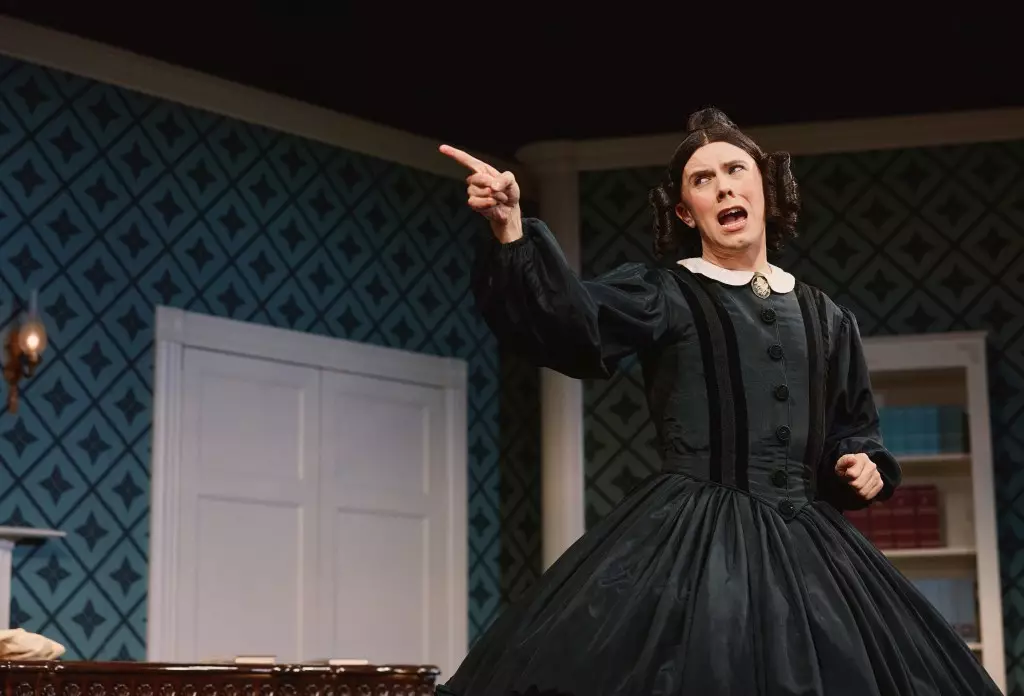Broadway is a dynamic world where performances come and go, leaving behind a trail of emotions, memories, and financial statistics that reflect the health of this iconic entertainment industry. Recently, several noteworthy productions have bid farewell, marking significant milestones not only in their journeys but also collectively for Broadway itself.
Farewell Performances and Box Office Highlights
The theater community witnessed a series of emotional goodbyes last week as “Our Town,” a classic piece by Thornton Wilder, concluded its limited engagement. Featuring a stellar cast including Jim Parsons, Katie Holmes, Ephraim Sykes, and Zoey Deutch, the revival took a bow in style. With an impressive closing week gross of $1,084,024—an increase of $128,404 from the previous week—this production marked its best financial performance since its opening last fall. Notably, attendance hovered above 95%, illustrating the continued affection and interest in classic storytelling through theatrical performances.
Meanwhile, “Oh, Mary!” continued its charming run but too had its own major farewell as creator and title star Cole Escola stepped down from the role of Mary Todd Lincoln. Replacing Escola is Betty Gilpin, whose own reputation precedes her, suggesting a seamless transition. In its final week with Escola, “Oh, Mary!” secured a hefty $1,253,871 in ticket sales, echoing the show’s popularity with audiences eager to see the original creative vision before it evolved with new interpretations.
Similarly, “The Great Gatsby” watched its leading actor Jeremy Jordan exit the spotlight after a riveting run. With a closing week gross of $1,891,769, Jordan’s farewell was grand, filling approximately 95% of theater seats. His role will be taken over by Ryan McCartan, presenting yet another exciting shift in casting. The anticipation surrounding this transition speaks volumes about the ongoing allure of F. Scott Fitzgerald’s narrative reimagined for the stage.
The turn of the calendar also brought good news for numerous shows still running, with “Wicked” reclaiming its title as Broadway’s top earner at $2,602,661, a testament to its perennial appeal. The trends seen this past week also hinted at the resilience of Broadway, with a total of 29 productions collectively grossing $33,372,166—a remarkable 4% increase over the previous week, and a striking 42% rise compared to the same timeframe last year.
In addition to the well-established titles, emerging productions like “Eureka Day” and “English,” both of which have yet to fully settle into their runs, contributed to the overall picture with varying degrees of success. “Eureka Day” faced challenges that forced a performance cancellation, garnering $344,178 across seven shows, while “English,” receiving acclaim as a Pulitzer-winning play, achieved $251,032 in its final week of previews.
Analyzing the performance data reveals Broadway is significantly thriving, with season totals indicating a gross of $1,203,177,268—a notable 18% increase from the same point last year. Audience attendance reflects this upward trajectory as well, recording 9,376,418 patrons during the 35th week of the 2024-25 season, up 16%. These figures, procured from The Broadway League, portray a renewed exuberance for theatrical experiences amid various competing forms of entertainment.
The transitioning lineups in these productions suggest an invigoration of Broadway; fresh perspectives and new faces often breathe life into established works, potentially drawing in both returning fans and newcomers to theater. That Broadway can sustain substantial revenue amidst evolving casts and shows is a fantastic indicator of its cultural significance and economic viability.
As a multifunctional platform for storytelling, Broadway remains an essential part of the cultural fabric of New York City and beyond. Its recent shifts and departures serve not only as a means of transition for individual shows but also as a broader reflection of the industry’s pulse. With classic tales brought back to life, new stories emerging, and the ever-present drive for innovation, Broadway is evidently not just surviving but thriving in a competitive entertainment landscape. The farewell performances of beloved productions remind us that while changes will come, the essence of Broadway—its ability to evoke emotion, attract audiences, and inspire creativity—will persist as its timeless heartbeat.

